![Best AK-47 Buyer’s Guide [Field Tested] Best AK-47 Buyer’s Guide [Field Tested]](https://gundigest.com/wp-content/uploads/best-ak-buyers-guide-ak47-feature-hd-768x496.jpg)
Want to buy an AK-47? I brought in a few of the best AK rifles chambered for 7.62×39 and ran them through their paces to help you make your choice.
AK-47s are probably more popular in the U.S. now than they’ve ever been. Surprising, since the cost of the rifles and their ammunition is also at their zenith. Once viewed as the poor man’s alternative to the AR-15, that is no longer the case. Today, you can get an AR for $400, and the cheapest .223 Remington ammo is less expensive than the cheapest 7.62×39.
No, the AK is no longer the budget option it once was. The AK has become a rifle purchased by historical enthusiasts, collectors and shooters just interested in owning the exotic weapon of the enemy. Given their inflated prices, however, you want to spend your money wisely and choose the best AK that you can for your needs and desires. So, I brought some in for hands-on testing and evaluation to help you make that decision.
How I Made My Picks
The very first gun that I shot was an AK, and it’s the firearm that sparked a lifelong interest in this hobby and led to my eventual career. Consequently, I’ve spent more time researching Kalashnikovs than any other firearm platform and own more of them than I can shake a stick at. It’s fair to say that I had some preexisting notions before starting this project, but it didn’t stop me from testing and assessing the guns as objectively as possible. Many of my biases were confirmed, but there were a couple of surprises as well.
Ultimately, the goal of the testing was simply to identify any problems if they exist, ensure their reliability and juxtapose the shooting experiences of each AK side-by-side. Testing them like this allowed for some hair-splitting and revealed some nuanced differences between them. Based on criteria like their fit and finish, their cost, the feel of their recoil impulse and the included furniture, I determined what each model does best.
The AK-47 Review Process And Notes
First things first, I should clarify that this buyer’s guide is only discussing 7.62×39 AK rifles that are currently available new, colloquially referred to as AK-47s .
To test each AK, I headed to the range with a duffel bag full of loaded mags and a couple of additional cases of ammo to top them off. 2,000 rounds of Wolf Polyformance 123gr HP were provided by AmmoToGo and an additional 500 rounds of Grom 124gr FMJ were provided by Atlantic Firearms. That comes to a grand total of 2,500 rounds or 500 rounds per gun.
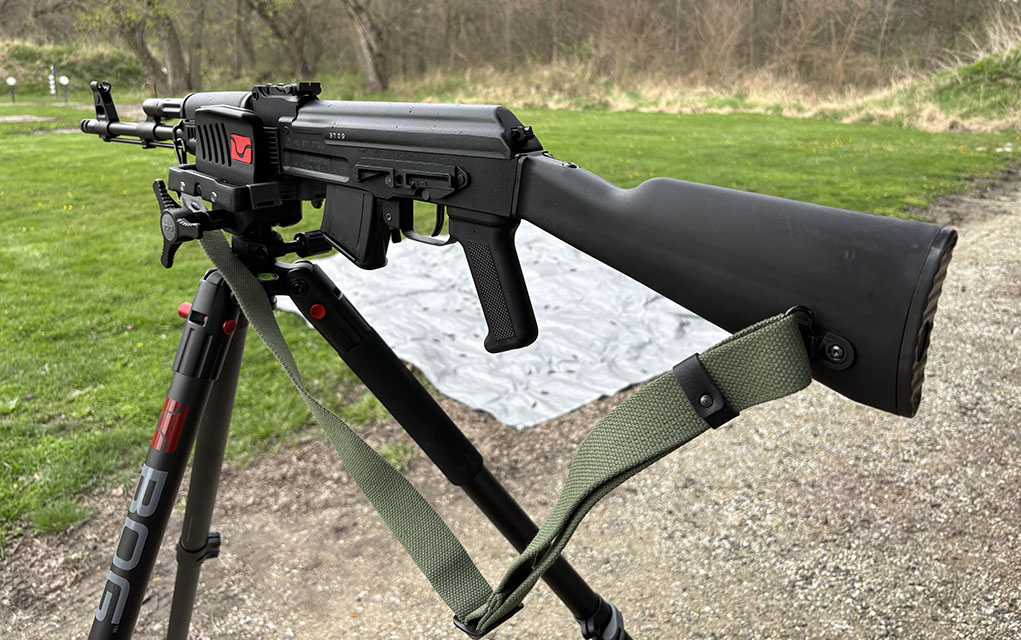
For an AK, or any rifle worth its salt for that matter, 500 rounds is not a lot. It is, however, enough that any possible issues should rear their head. The good, and unsurprising, news is that not a single malfunction occurred. That means for all intents and purposes, you should expect all of these rifles to be equally reliable out of the box.
A wide variety of magazines were used to see if any combinations of AK and mag didn’t like each other. Between my surplus steel mags, various polymer mags (Bulgarian, PMAG, Tapco, and US Palm) and the mags included with each rifle, I didn’t experience any issues, but that said AK mags sometimes require a bit of filing to properly fit. The AKs with tighter magwells needed some convincing to seat some polymer mags, but all worked fine.
As for accuracy, I tested out to 200 yards with a steel half-size silhouette. Every rifle hit the target with ease. At the very least, they’re all minute-of-man accurate.
The rest of the differences I gleaned from the testing process will be discussed in the buyer’s guide portion.
The Best AK-47 Rifles:
- Editor's Choice: Century Arms/Cugir WASR-10
- Best Budget AK: PSA GF3
- Best Looking AK: WBP 762SC Jack Classic
- Best Milled AK: Arsenal SAM7R-62
- Wildcard Option: Zastava ZPAP M70
| MODEL | COUNTRY OF ORIGIN | PATTERN | BARREL | WEIGHT | FURNITURE | MUZZLE DEVICE | MUZZLE THREADS | SIDE SCOPE RAIL | BAYONET LUG | MSRP |
| Century Arms/Cugir WASR-10 | Romania | AKM | Cold Hammer Forged, Chrome-lined | 7.5 Pounds | Wood or polymer | Slant brake | 14×1 LH | Yes, AKM | Yes | $1,070 |
| PSA GF3 | U.S. | AKM | Gas Nitride 4150 steel treated | 6.5 Pounds | Polymer | Slant brake | 14×1 LH | Yes, AKM | Yes | $700 |
| WBP 762SCS JACK CLASSIC | Poland | AKM | FB Radom Hammer Forged, Chrome-lined | 7.2 Pounds | Wood | Slant brake | 14×1 LH | Yes, AKM | Yes | $1,100 |
| ARSENAL SAM7R-62 | Bulgaria | Milled | Cold Hammer Forged, Chrome-lined | 8 Pounds | Polymer | AK-351 Muzzle Brake | 14×1 LH | Yes, AKM | Yes | $1,930 |
| ZASTAVA ZPAP M70 | Serbia | Yugo | Cold Hammer Forged, Chrome-lined | 7.9 Pounds | Wood | Slant brake | 14×1 LH | Yes, Yugo | Yes | $1,063 |
Editor’s Choice: Century Arms/Cugir WASR-10
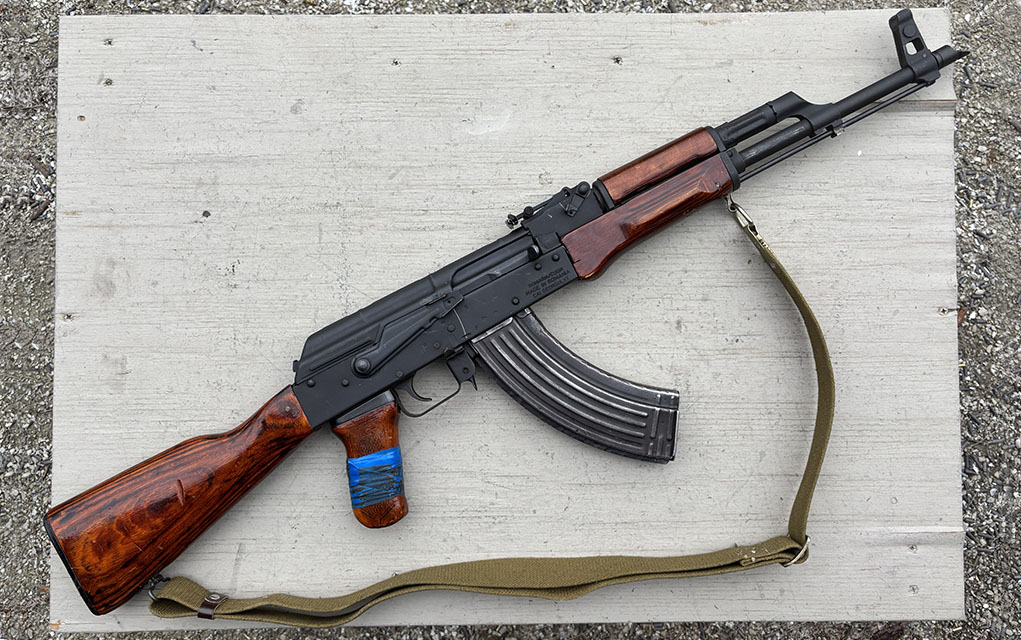
Country of Origin: Romania
Pattern: AKM
Barrel: Cold Hammer Forged, Chrome-lined
Weight: 7.5 Pounds
Furniture: Wood or polymer
Muzzle Device: Slant brake
Muzzle Threads: 14×1 LH
Side Scope Rail: Yes, AKM-pattern
Bayonet Lug: Yes
MSRP: $1,070
Pros
- Rugged, reputation for excellent reliability
- Chrome-lined hammer forged military barrel
- AKM-pattern, good host for modifications
- Enjoys being abused
Cons
- Included furniture is garbage
- Rough, grayish finish isn't attractive
- No magwell dimples (purely aesthetic)
Comes With: One 30-round mag, no cleaning rod
Other Available Variants: WASR-10 UF (underfolder stock), WASR Paratrooper (side-folding stock, combo gas block/front sight)
The WASR-10 that was tested is my personal rifle, and I stand by my decision to put it at the top of my list. Why? It embodies the rough, rugged reliability that AKs are known for. In terms of provenance, it’s the closest to a “true military AKM” of anything on the list.
Long story short, these are made in Cugir, Romania, at the same factory that’s been pumping out AKs since the early 1960s. Millions of select-fire models have been exported and spread throughout the world since then, and starting in the late 90s, semi-auto variants became available on the U.S. civilian market. They quickly gained a reputation for being workhorses and offered some of the best value you could find at the time.
They’re not as cheap as they once were, but they’re not as expensive as many comparable models either. For someone looking for a basic, no-frills AK-47 at a middle-shelf price (it's frequently priced below MSRP), you couldn’t go wrong with a WASR.
As far as shooting one goes, it feels like an AK should. It’s such a standard, true-to-form AK in fact that it served as the baseline for which all the other test guns were compared.
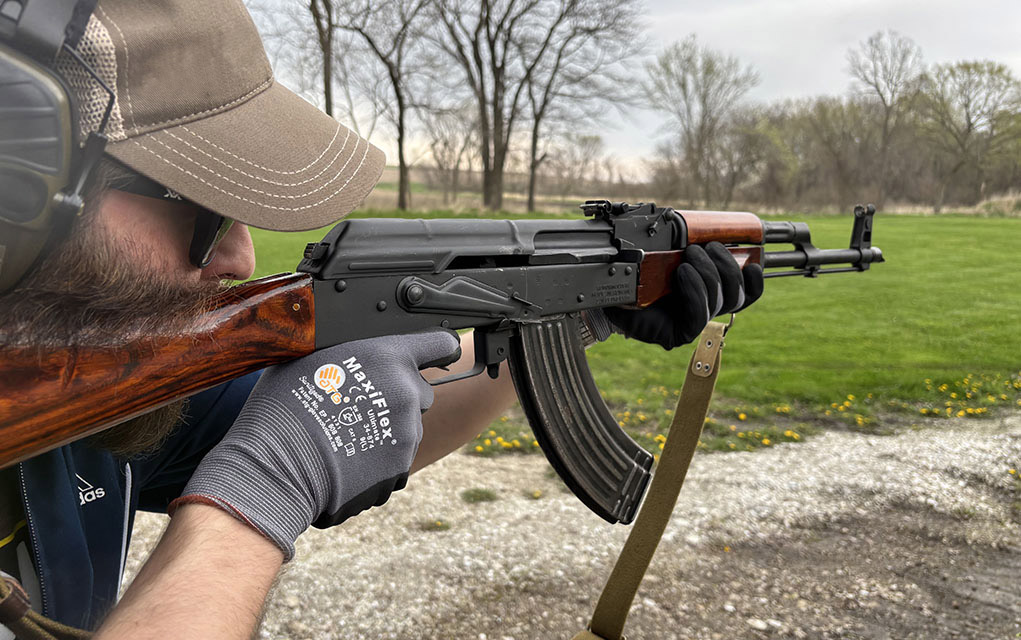
The only real downsides in my mind are that WASRs sport a rough utilitarian finish on their metal parts and ship with low-quality polymer or wood furniture designed to be replaced (as has already been done on the example featured here).
The best parts of the WASR include its production at a legacy factory—initially set up by the Soviets—its use of quality military-grade parts like a cold hammer forged chrome-lined barrel and its widespread compatibility with all standard AKM components and accessories. It's roughness is also a quality in my eyes, because you'll never feel bad about throwing it around and scratching it up, and that's what AKs are meant for.
One final note is that the rifle featured in this review is an original WASR-10, but a few years ago Century Arms began importing a model called the WASR-10 V2. The only noteworthy difference is its gas block does not feature a bayonet lug. If having a bayo lug is important to you, just track down one of the plentiful original WASR-10s instead.
WASR-10 Deals
Best Budget AK: PSA GF3
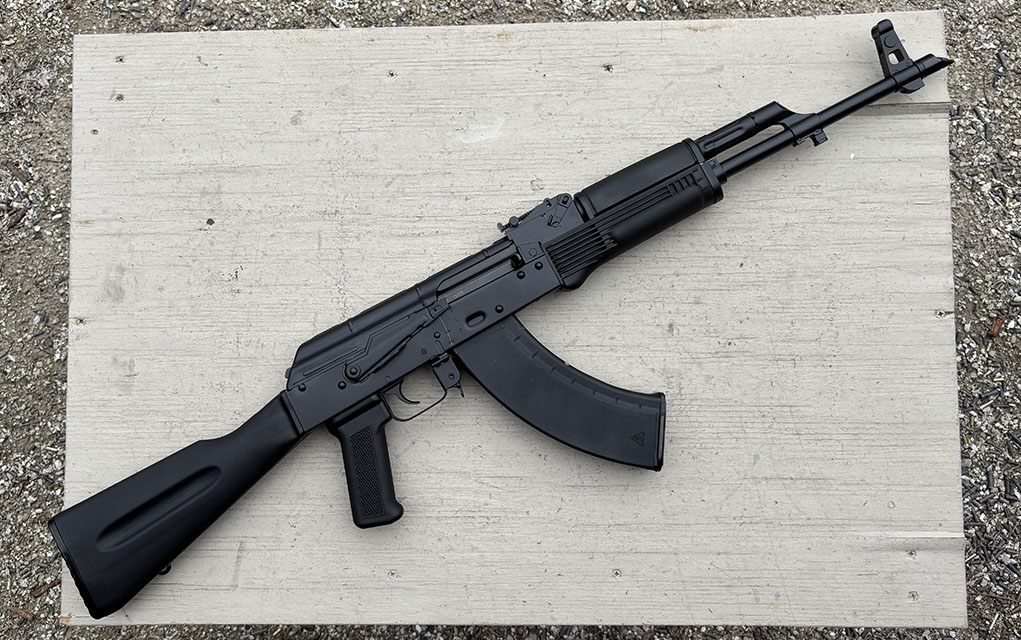
Country of Origin: U.S.
Pattern: AKM
Barrel: Gas Nitride 4150 steel treated
Weight: 6.5 Pounds
Furniture: Polymer
Muzzle Device: Slant brake
Muzzle Threads: 14X1 LH
Side Scope Rail: Yes, AKM
Bayonet Lug: Yes
MSRP: $700
Pros
- Very affordable
- Impressively soft recoil
- Nice finish
- Enhanced safety lever
Cons
- Barrel is not chrome-lined
- Not overgassed, won't be as reliable in adverse conditions
Comes With: One 30-round PSA mag, cable lock, no cleaning rod
Other Available Variants: PSA offers the GF3 in dozens of configurations with polymer, wood and railed furniture in several colors
If you’re looking to get into AKs while spending little money, look at Palmetto State Armory.
The company’s first couple of generations of AK-47s had some kinks, but it’s widely accepted that the current-generation GF3 rifles are absolutely rock solid. Like every imported AK on the list, this domestically manufactured rifle features a hammer-forged bolt, carrier, and front trunnion. When it comes to those parts, you should accept no substitute.
Besides the attractive price tag, the GF3 has a lot going for it. In fact, it even does quite a few things better than some of the others. First off, it has a nice black finish and its polymer furniture is good enough quality to keep installed if you like the way it looks. It also ships with an enhanced safety lever installed that features a shelf for quicker actuation. Another note on the safety is that while most AKs feature rather tight levers that often need to be broken in a bit, the GF3’s was the smoothest, best AK safety I’ve ever felt right out of the box.
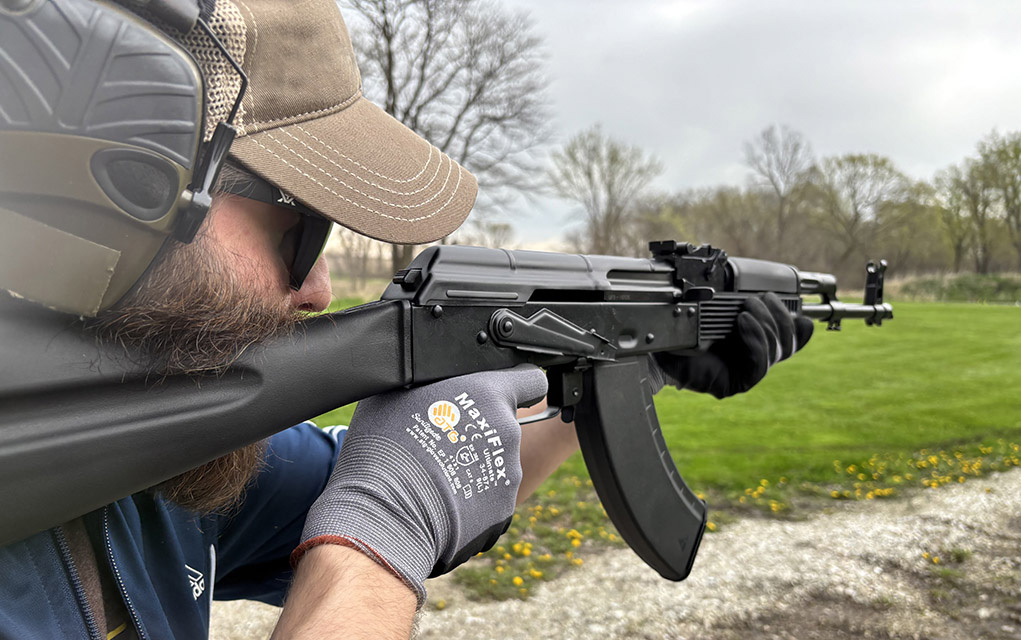
As for how it shot, the GF3 had the lowest recoil impulse of the standard AKM-pattern rifles tested (WASR, GF3 and WBP). PSA clearly dialed the gas on this gun very carefully to be just enough to keep it reliably cycling. While this made it a dream to shoot, it could also be considered a drawback depending on how you look at it. If you had to pick an AK to trust your life with on some muddy battlefield, the GF3 isn’t the one. Harsh conditions are why AKs were designed to be overgassed and it’s partly what made them so reliable—it keeps the gun running in the face of excessive fouling or debris in the action.
Another potential downside is the barrel is not chrome-lined, but unless you plan on shooting corrosive ammo through it that shouldn't be an issue.
That all said, thankfully, most of us aren’t planning on going to war and are simply buying an AK as a range toy. If that’s all you want it for, the PSA GF3 is an excellent option that shoots surprisingly softly and spits less gas in your face than anything else on this list.
PSA GF3 Deals
Best Looking AK: WBP 762SC Jack Classic
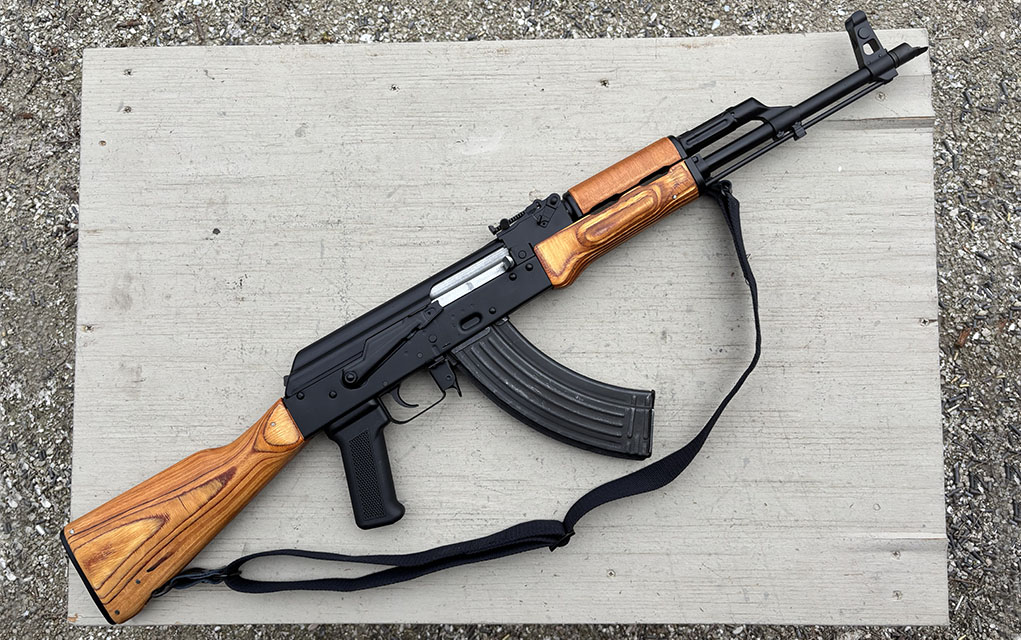
Country of Origin: Poland
Pattern: AKM
Barrel: FB Radom Hammer Forged, Chrome-lined
Weight: 7.2 Pounds
Furniture: Wood
Muzzle Device: Slant brake
Muzzle Threads: 14X1 LH
Side Scope Rail: Yes, AKM
Bayonet Lug: Yes
MSRP: $1,100
Pros
- Gorgeous finish
- Handsome furniture
- Barrel is chrome-lined and made by FB Radom
- Reliable, faithful AKM clone
Cons
- A bit pricey
- Finish and wood look so nice, you'll be scared to properly abuse it
Comes With: One 30-round magazine, NcSTAR VISM 2-point sling, front sight adjustment tool, cable lock, cleaning rod
Other Available Variants: WBP offers its rifles with several colors of wood, polymer and tactical furniture, as well as a DIY configuration that includes no furniture
In many ways, the WBP 762SC Jack Classic is just a higher-end WASR. Like the WASR, it’s made in an ex-communist country with a history of producing excellent guns, it’s a very faithful copy of the AKM (including its hammer-forged chrome-lined barrel made by FB Radom) and its recoil impulse suggests its gas is tuned to military specifications, so it's plenty reliable. What it does better than a WASR are all aesthetic improvements—a gorgeous glossy black finish and handsome, original-looking laminate wood furniture. It may not come across through the photos, but the finish really looks better and of higher quality than any other rifle on this list.
That said, one angle to consider before you choose the best AK for you is how you plan on treating it. Yes, the WBP is a beautiful rifle, but that could easily result in you babying it and worrying about every ding and scratch like it's a new car. If you want to shoot your AK and treat it as roughly as it deserves, you won't feel nearly as bad about doing that to a WASR.
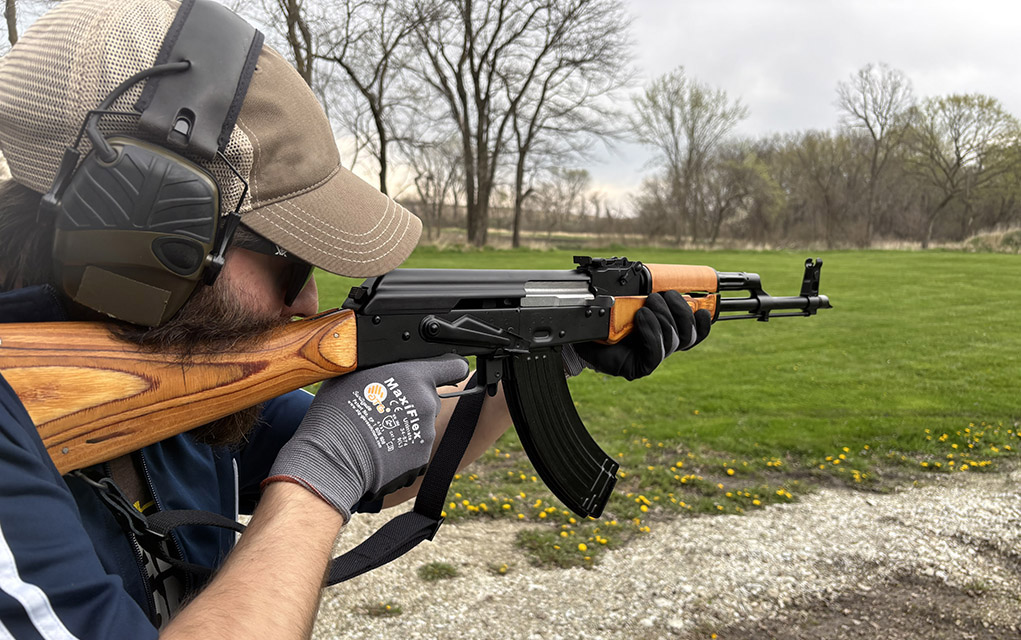
Unsurprisingly, shooting the WBP felt the same as the WASR since both are essentially AKM clones. There isn’t much more to say about it than that. Simply put, if you’re after classic AK aesthetics and are willing to pay a bit more for it to look beautiful right out of its box, the WBP Jack Classic is your ticket.
WBP Jack Classic Deals
Best Milled AK: Arsenal SAM7R-62
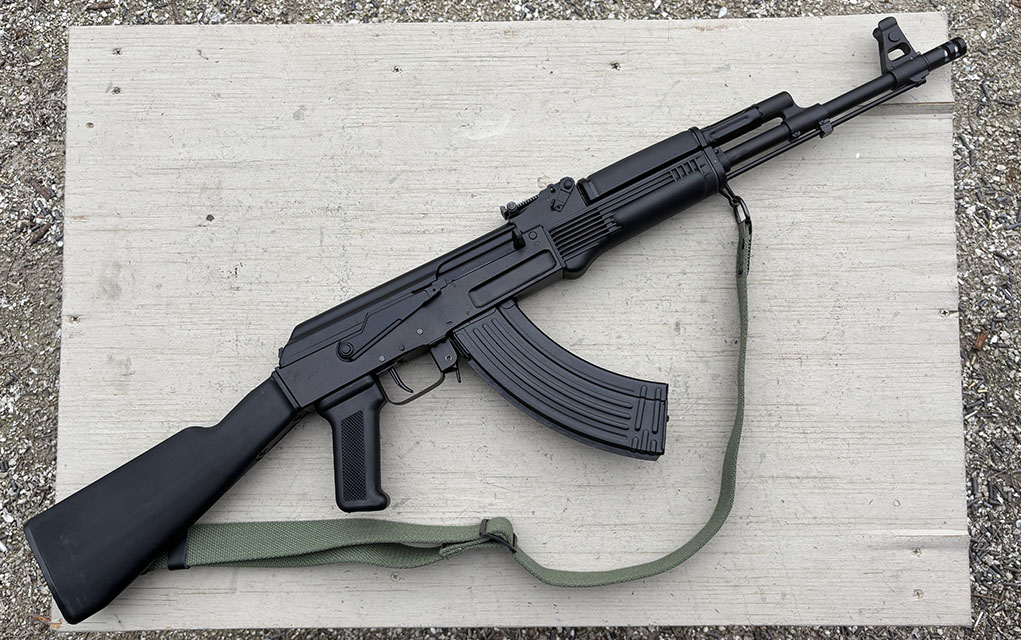
Country of Origin: Bulgaria
Pattern: Milled
Barrel: Cold Hammer-Forged, Chrome-lined
Weight: 8 Pounds
Furniture: Polymer
Muzzle Device: AK-351 Muzzle Brake
Muzzle Threads: 14X1 LH
Side Scope Rail: Yes, AKM
Bayonet Lug: Yes
MSRP: $1,930
Pros
- Very soft shooter
- Smooth action
- Nice flat trigger
- Comes with a muzzle brake
- Chrome-lined barrel
Cons
- Heavy
- Very expensive
- Milled receiver limits aftermarket parts compatibility
- Subpar finish, prone to flaking
Comes With: One 10-round mag, Arsenal 2-point sling, buttstock cleaning kit, oiler bottle, cleaning rod
Other Available Variants: SAM7SF (side-folder stock), SAM7UF (underfolder stock) ; all offered in several colors of polymer furniture and with various muzzle device options
While most AK-producing countries completely abandoned milled receivers as soon as they had the technology to manufacture stamped receivers instead, Bulgaria is the exception. Once importation began, Arsenal became the gold standard for shooters in the U.S. who wanted a milled AK-47.
The question then is why does anyone want an AK with a milled receiver? The manufacturing process not only results in heavier guns, but more expensive ones too. Militaries don’t want to pay more for guns than they have to, and soldiers prefer lightweight rifles since they carry them far more than shoot them, but that doesn’t apply to those of us looking to have fun on the range.
The first thing you’ll notice when you pick up an Arsenal SAM7R-62 is its weight. While you wouldn’t want to hump it over a mountain, that weight also makes for one very nice shooter. Further aided by the included compensator and the wonderfully crisp flat trigger, the Arsenal was by far the best AK to shoot on this list. It really tames 7.62×39 and makes it feel more like a 5.56. Another benefit of the milled receiver is that the action feels much smoother than any of the stamped AKs.

So, why not go with an Arsenal if it shot and felt the best of them all? It mostly comes down to price and parts compatibility. Quality comes at a cost and Arsenal rifles have price tags significantly higher than any other AK on this list. Even if you have the money for it, a milled AK may not be the direction you want to go. The vast majority of aftermarket AK furniture is designed for stamped receiver AKs. This means that parts like buttstocks, handguards and some internal components won’t fit an Arsenal. If you plan on tricking your AK out, whether that be tactical or with classic wood, you’re going to have far fewer options to choose from.
It's also worth noting that for the price, Arsenals have a surprisingly rough-looking painted finish. This finish is also known to be prone to flaking, especially when cleaned with certain chemicals, although I didn't experience this on the test rifle.
That all said, if you just want the softest shooting AK out of the box that money can buy, Arsenal is undoubtedly the way to go.
Arsenal SAM7R-62 Deals
Wildcard Option: Zastava ZPAP M70

Country of Origin: Serbia
Pattern: Yugo
Barrel: Cold Hammer Forged, Chrome-lined
Weight: 7.9 Pounds
Furniture: Wood
Muzzle Device: Slant brake
Muzzle Threads: 14×1 LH
Side Scope Rail: Yes, Yugo
Bayonet Lug: Yes
MSRP: $1,063
Pros
- Soft shooter
- Nice finish
- Good hardwood furniture
- Safety features bolt hold open notch
Cons
- Heavy
- Yugo-pattern design limits aftermarket parts compatibility
- No cleaning kit trap door in buttstock
Comes With: One 30-round magazine, cleaning rod
Available Variants: ZR7762UFSR (underfolder stock), ZR7762RTF (side-folder triangle stock), ZR7762RT (fixed triangle stock); other combinations of wood (various types), polymer and tactical furniture offered as well
Zastava’s ZPAP M70 has become one of the most popular AK options in recent years, and it’s easy to see why. The company is offering some very high-quality rifles at middle-of-the-road prices, and their fit, finish and hardwood furniture make them attractive to many.

What makes this the wildcard option is, like Arsenal's AKs, ZPAPs are not the standard AKM-pattern. They are Yugoslavian or “Yugo” pattern, and that means they use a thicker gauge of metal for their stamped steel receivers and have bulged front trunnions. These features were added by the Yugoslavians to ensure the guns were strong enough to handle firing rifle grenades, but that’s irrelevant in a civilian context. For us, the extra weight merely helps dampen the recoil and makes for a slightly more pleasant shooting experience than with the standard AKM-pattern rifles.
The downside of this difference is again similar to Arsenal’s—parts compatibility. Buttstocks, handguards and some internal parts will need to be specifically designed for Yugo-pattern AKs. The aftermarket for this has grown substantially, but it’s nowhere near as big as that for AKM parts. The optics rail is different as well, which further limits scope and mount options. The ZPAP also loses a point in my book for not having a trapdoor in its buttstock for a cleaning kit, but it earns the point back for coming with a safety lever that has a bolt hold-open notch.
If the parts' compatibility and higher weight don’t bother you, a ZPAP will make for a very nice shooter.
Zastava ZPAP M70 Deals
AK-47 FAQ:
The A and K stand for Автоматы and Калашникова, respectively, which translate to Automatic and Kalashnikov in English. Kalashnikov is the last name of the rifle's inventor.
Technically speaking, there has never been a rifle to ever be officially designated as AK-47. If anything can be called an AK-47 it's the first three patterns of Kalashnikov rifle developed in the Soviet Union between the late 1940s and mid-1950s. In the West, AK-47 is a catch-all colloquialism used to refer to any Kalashnikov rifle chambered for 7.62x39mm, even though the rifles in question are typically AKMs. The “M” in AKM stands for модернизированный meaning modernized. The primary difference is the AKM features a stamped steel receiver. This is the version that's been made in the tens of millions across the globe making it so prolific and well-known.
The exact production numbers are debated, but many believe that over 100 million Kalashnikov-type firearms have been manufactured since its invention. The rifles were (and in some cases still are) made in Russia, Romania, Yugoslavia/Serbia, Hungary, Poland, East Germany, Finland, Bulgaria, Albania, Iraq, North Korea and other nations. Many of these countries provided Kalashnikovs as military aid to politically friendly nations and non-state actors, resulting in massive global proliferation. The AK is almost certainly the most recognizable firearm in the world, and it's the only gun to be featured on a country's flag (Mozambique).
This question is really asking whether one should get an AK chambered for 7.62×39 or for 5.45×39. Both are excellent cartridges, but which is best for you depends on what you want it for. If for some reason you really want your AK to have ballistics similar to 5.56x45mm NATO, then 5.45 offers comparable performance. However, 5.45×39 ammo and magazines are far less common in the United States than 7.62×39 ammo and mags. For most American shooters, the abundance and commonality of 7.62 AKs makes them the better option. A third path to consider is an AK chambered for .223/5.56. These have gained popularity in recent years and besides 5.56 AK mags not being as common as 7.62 ones, these are an excellent option as well.
More On Kalashnikovs:
- PSA AK-74 Review Review: American-Made Russian Thunder
- Soviet Gun, NATO Ammo: The 5.56 AK Buyer’s Guide
- The AK Red Dot Mount Buyer's Guide
- AKM: The Acme Of AKs
- SKS Vs AK-47: If You Could Only Have One
- Going Modern With B5 Systems AK Furniture
- Krispy Kalash: Timney AK Drop-In Trigger Review

Next Step: Get your FREE Printable Target Pack
Enhance your shooting precision with our 62 MOA Targets, perfect for rifles and handguns. Crafted in collaboration with Storm Tactical for accuracy and versatility.
Subscribe to the Gun Digest email newsletter and get your downloadable target pack sent straight to your inbox. Stay updated with the latest firearms info in the industry.


![Best Concealed Carry Guns In 2025 [Field Tested] Wilson Combat EDC X9S 1](https://gundigest.com/wp-content/uploads/Wilson-Combat-EDC-X9S-1-324x160.jpg)


![Best 9mm Carbine: Affordable PCCs [Tested] Ruger Carbine Shooting](https://gundigest.com/wp-content/uploads/Ruger-Carbine-Shooting-100x70.jpg)
![Best AR-15: Top Options Available Today [Field Tested] Harrington and Richardson PSA XM177E2 feature](https://gundigest.com/wp-content/uploads/Harrington-and-Richardson-PSA-XM177E2-feature-100x70.jpg)

A good read. AK’s are not a subject I’m very familiar with, having jumped to the AR side of the question a long time ago. The AK is probably the most widely produced arm due to its ComBloc roots, in the history of firearms, but I never felt the “bug” to own one. Like a lot of ComBloc weapons, quality varied from poor to excellent, so a guide like this is great to have.
I’m saving the article in case I suddenly develop the urge to own one.
GERMANS (STG-44):
Years of design and testing spent to develop the 1st assault rifle
RUSSIANS (AK-47):
“Hey Ivan, lets copy this Kraut thing and call it ours”
This is a common misconception, but the truth is that the StG-44 has more in common with the AR-15 than it does with the AK. All three great weapons, however, and the AK was certainly inspired at least in concept by the Sturmgewehr.
Mikhail Kalashnikov said that he had never seen a Sturmghewer when he designed the AK, and, unlike a lot of people, I actually take him at his word on this. The reason I take him at his word is that the AK looks to me like someone told Kalashnikov about the STG-44 and he designed his rifle to hit all the same high points but, not having an STG-44 to look at, he used his own solutions to solve the same problems in different ways. Ultimately the two rifles look a lot alike, handle a lot alike, and do the same job, but they do it very differently. Internally they are not very similar at all.
I’d love to have a Sturmghewer in my collection, but if I were heading into battle I’d rather have an AK!